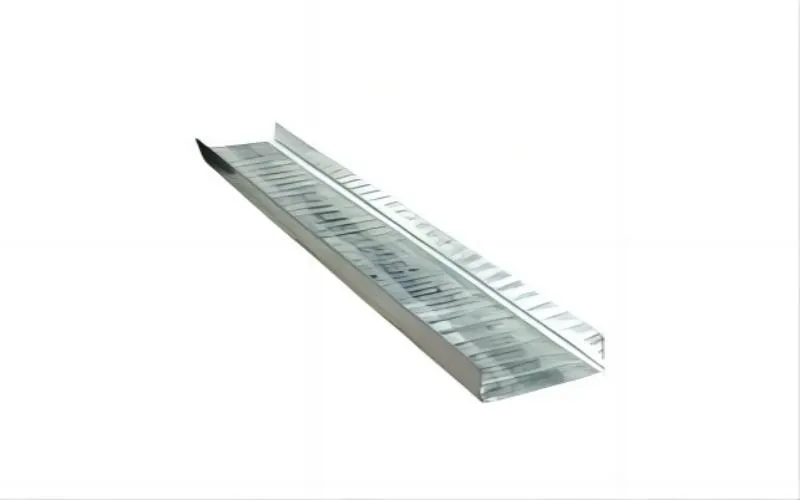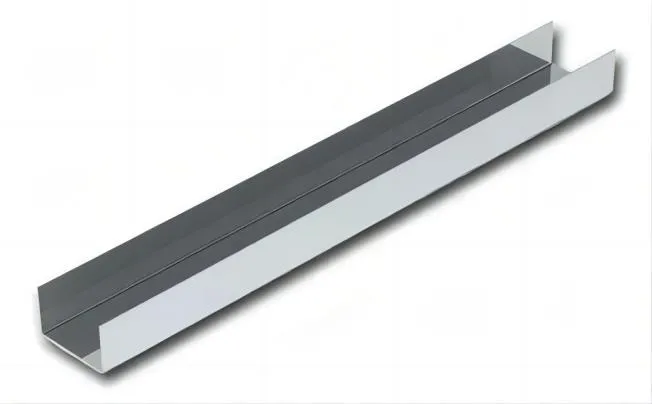What is Stainless Steel C-Channel Steel?
A structural element composed of stainless steel is called a stainless steel channel, or C-channel. Its “C”-shaped vertical web and top and bottom flanges, which are 90 degrees from the web, define its shape.
What are the advantages of C-shaped steel itself and its practical application?
A C-shaped steel-forming machine automatically processes and forms C-shaped steel. In accordance with the specified C-shaped steel size, the forming machine can automatically finish the C-shaped steel forming operation. C-shaped steel is made by cold-forming hot-rolled steel plates and has strong, thin walls, low weight, and good cross-sectional performance. The same strength might result in a 30% material savings as compared to conventional channel steel. Purlins and wall beams are two common steel structures made of C-shaped steel. It can also be mixed and matched to create lightweight supports, roof trusses, and other architectural elements. It can also be utilized in the fabrication of machinery and light industry components like as arms, beams, and columns.
These days, cold-rolled, hot-dip galvanized C-shaped steel is frequently utilized and offers a number of benefits.
- incredibly light in weight.
One benefit of its hot-rolled steel plate construction is its minimal weight. In contrast to concrete, less structural planning is required, and the building procedure is quite easy.
- Sufficient adaptability.
Its stability is high and its internal structure is reasonable and scientific. It can typically tolerate higher oscillations and is more resilient to natural disasters.
- Conserve time and effort.
Welding allows for substantial material savings as well as a certain reduction in labor and material costs. It also has the benefit of being simple to process, disassemble, and recycle during the processing phase.
While it offers benefits, there are several drawbacks as well, like delamination following hot rolling. If homogeneous cooling is not carried out following milling, residual stresses may potentially arise.
In general, its advantages exceed its disadvantages. Owing to these benefits, C steel is widely utilized and has seen constant improvement in both production and application.

In practical construction, C-shaped steel offers other benefits as well
1. Compared to traditional buildings, steel structure homes are better able to satisfy the needs for the flexible division of huge bays in buildings. The effective indoor usage area can be enhanced by roughly 6% and the area utilization rate can be raised by decreasing the cross-sectional area of columns and utilizing lightweight wall panels.
2. Good energy-saving effect. The walls are composed of sandwich panels, square steel, and lightweight, energy-efficient, standardized C-shaped steel. These materials have a 50% energy savings rate, strong seismic resistance, and good thermal insulation performance.
3. Using steel structural systems in residential buildings may fully use the steel’s ductility, excellent plastic deformation capacity, and excellent resistance to wind and earthquakes, significantly enhancing the home’s safety and dependability. Steel structures can prevent building collapse damage, particularly in the event of typhoons and earthquakes.
4. The building weighs very little overall. Due to its lightweight nature—roughly half that of a concrete structure—the steel structure residential system can significantly save foundation costs.
5. Compared to the typical residential system, the construction process is completed at a minimum of one-third faster and at a faster pace. Five people and twenty days are all it takes to finish a 1,000-square-meter building.
6. Good impact on environmental protection. Steel structure homes are built with a significant reduction in the amount of sand, stone, and ash utilized in their construction. The majority of the materials are either 100% biodegradable or recyclable. The majority of the components that make up the building may be recycled or broken down without creating waste.
7. Adaptable and plentiful. A big bay design allows for flexible interior space division to accommodate various user needs.
8. Fulfill the demands of sustainable development and residential industrialization.

Applications of Stainless Steel C-Channel Steel
Building and architecture: For structural support in projects including beams, frames, and roof trusses, stainless steel C-channel steel is utilized. It gives structures and buildings stability and strength.
Industrial and manufacturing: Stainless steel C-channel steel is used in factories, warehouses, and manufacturing facilities, among other industrial environments. It supports equipment frames, conveyor systems, and large machines.
Fluid management: Guttering and fluid disposal systems made of C-channel steel can assist maintain certain areas clean. Features like concealed wiring or plumbing can also be protected with it.
Both architectural and ornamental: Because of its attractive appearance, stainless steel C-channel steel is utilized in architectural applications. In both commercial and residential buildings, it can be utilized for panelling, trim, railings, and decorative accents.
Food processing and pharmaceuticals: Because of its corrosion resistance and hygienic qualities, stainless steel C-channel steel is appropriate for use in these sectors. It is utilized for support structures, platforms, and equipment frames.
Chemical and corrosive settings: Refineries, chemical processing plants, and other corrosive environments can use stainless steel C-channel steel because of its resistance to corrosion. It is resistant to exposure to hostile environments and chemicals.
Structural support: Bridges, infrastructure projects, and the manufacture of automobiles are just a few of the applications for which stainless steel C-channel steel is used.
Mining and quarrying: Weaved or welded screens for water filtration, thread fasteners, and springs are just a few of the uses for stainless steel C-channel steel in this sector.



